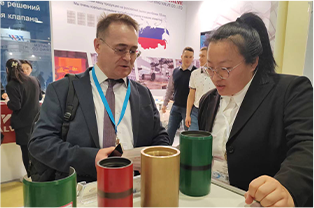- Afrikaans
- Albanian
- Amharic
- Arabic
- Armenian
- Azerbaijani
- Basque
- Belarusian
- Bengali
- Bosnian
- Bulgarian
- Catalan
- Cebuano
- Corsican
- Croatian
- Czech
- Danish
- Dutch
- English
- Esperanto
- Estonian
- Finnish
- French
- Frisian
- Galician
- Georgian
- German
- Greek
- Gujarati
- Haitian Creole
- hausa
- hawaiian
- Hebrew
- Hindi
- Miao
- Hungarian
- Icelandic
- igbo
- Indonesian
- irish
- Italian
- Japanese
- Javanese
- Kannada
- kazakh
- Khmer
- Rwandese
- Korean
- Kurdish
- Kyrgyz
- Lao
- Latin
- Latvian
- Lithuanian
- Luxembourgish
- Macedonian
- Malgashi
- Malay
- Malayalam
- Maltese
- Maori
- Marathi
- Mongolian
- Myanmar
- Nepali
- Norwegian
- Norwegian
- Occitan
- Pashto
- Persian
- Polish
- Portuguese
- Punjabi
- Romanian
- Russian
- Samoan
- Scottish Gaelic
- Serbian
- Sesotho
- Shona
- Sindhi
- Sinhala
- Slovak
- Slovenian
- Somali
- Spanish
- Sundanese
- Swahili
- Swedish
- Tagalog
- Tajik
- Tamil
- Tatar
- Telugu
- Thai
- Turkish
- Turkmen
- Ukrainian
- Urdu
- Uighur
- Uzbek
- Vietnamese
- Welsh
- Bantu
- Yiddish
- Yoruba
- Zulu
Exploring Durable Steel Couplings for Enhanced Pipe Connections and Improved Fluid Transfer Efficiency
Understanding Steel Couplings for Pipe Applications
When it comes to the construction and maintenance of piping systems, the choice of fittings and connections is critical to ensuring durability, efficiency, and safety. Among various options available in the market, steel couplings have emerged as a preferred solution for joining pipes in diverse applications. This article explores the importance, types, advantages, and installation considerations of steel couplings in pipe systems.
What are Steel Couplings?
Steel couplings are mechanical devices used to connect two lengths of pipe, thereby allowing for the effective transfer of fluids and gases. Unlike welds or threaded connections, couplings can be installed or removed without extensive modification to the piping system. They are typically made from high-strength steel, which offers excellent resistance to corrosion, temperature fluctuations, and pressure changes.
Types of Steel Couplings
There are several types of steel couplings available, each designed for specific applications
1. Rigid Couplings These provide a solid connection by aligning the ends of two pipes. Rigid couplings are commonly used in systems where alignment is critical and movement due to thermal expansion is minimal.
2. Flexible Couplings These couplings allow for slight misalignment and can accommodate movements caused by thermal expansion or ground shifts. They are ideal for systems subject to vibrations or where the soil conditions are unpredictable.
3. Repair Couplings Designed to fix damaged pipes without complete removal, repair couplings can be quickly installed, minimizing downtime. They are particularly useful for emergency repairs in both commercial and residential settings.
4. Transition Couplings These allow for the connection of pipes of different materials or diameters. Transition couplings are essential in systems that need to integrate various types of materials, such as steel and PVC.
Advantages of Steel Couplings
steel couplings for pipe

2. Corrosion Resistance Properly coated or galvanized steel couplings can resist rust and corrosion, significantly extending their lifespan. This is particularly important in water supply and wastewater systems.
3. Ease of Installation Steel couplings are relatively easy to install compared to welding, which requires specialized skills and equipment. Most coupling systems use bolts or clamps for fastening, enabling quicker assembly.
4. Cost-Effectiveness While the initial investment may be higher than some alternatives, the durability and low maintenance requirements of steel couplings often lead to lower long-term costs.
Installation Considerations
While steel couplings are designed for straightforward installation, several factors must be considered to ensure optimal performance
1. Pipe Alignment Proper alignment is essential to prevent stress points that can lead to leaks or failures. Before installing couplings, ensure that the pipes are correctly aligned.
2. Torque Specifications Follow the manufacturer's torque specifications during installation to achieve a secure connection without damaging the coupling or the pipe.
3. Environmental Factors Consider the environment in which the coupling will be used. Factors such as temperature, pressure, and susceptibility to corrosive elements will impact the choice of coupling.
4. Regular Inspections Periodic inspections of couplings can help identify wear and prevent failures. Look for signs of corrosion or leaks and address any concerns promptly.
Conclusion
In sum, steel couplings represent a crucial component in pipe systems, offering strength, flexibility, and ease of use. Understanding the types and advantages of steel couplings, along with proper installation practices, can significantly enhance the reliability and longevity of piping infrastructure. With the right couplings, industries can ensure that their fluid transmission systems operate smoothly, efficiently, and safely.
-
Tubing Pup Joints: Essential Components for Oil and Gas OperationsNewsJul.10,2025
-
Pup Joints: Essential Components for Reliable Drilling OperationsNewsJul.10,2025
-
Pipe Couplings: Connecting Your World EfficientlyNewsJul.10,2025
-
Mastering Oilfield Operations with Quality Tubing and CasingNewsJul.10,2025
-
High-Quality Casing Couplings for Every NeedNewsJul.10,2025
-
Boost Your Drilling Efficiency with Premium Crossover Tools & Seating NipplesNewsJul.10,2025







